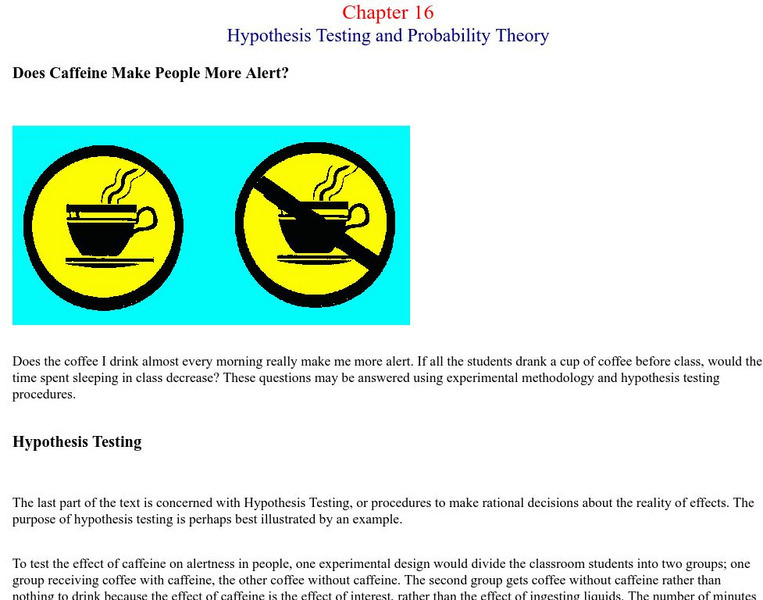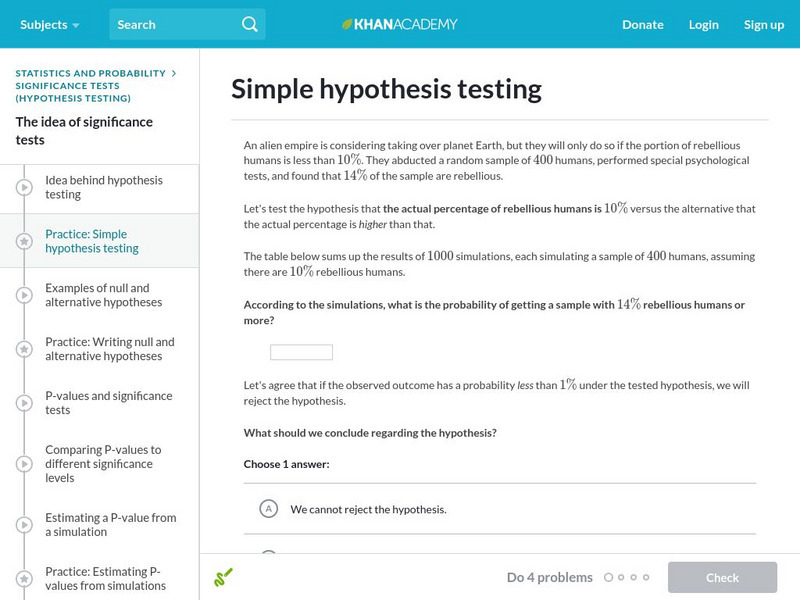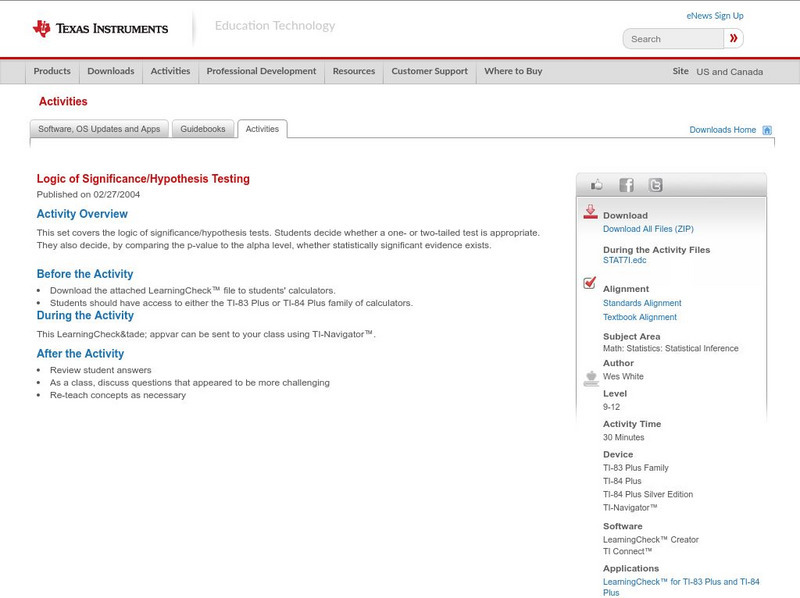Hi, what do you want to do?
Curated OER
Magazine Sales Talks
Students role-play to determine the best types of magazines that should be purchased for their media center. They create a sales presentation for a particular magazine in small groups. As they listen to each presentation they evaluate...
Curated OER
Civil War Letter
Students develop a question they are interested in researching about the Civil War. After completing a webquest on the war, they write a letter to their partner using the information they gathered. They use peer editing to check for...
Curated OER
Exploration of Civil War Webquest
Students use the internet to research what life was like for Confederate and Union soldiers in a specific battle of interest to them. In groups, they complete a webquest on the battle in which one represents a Confederate soldier and the...
Curated OER
Organisms – Their Needs
Students compare and contrast different organisms characteristics. In this life science lesson, students design an experiment about plants and animals needs. They collect data and write their conclusion about the experiment.
Curated OER
Mystery of the Matching Marks
Students view a Power Point and complete activities related to genetic evidence of human evolution. In this molecular evolution lesson, students view and discuss a provide presentation. They search for the "tell-tale telomere" and...
Curated OER
Apply Scientific Inquiry and Scientific Habits of Mind
Students review the components of the scientific inquiry method. In groups, they apply this method to various experiments they are given to complete. They also use the correct scientific habits of mind when researching different concepts.
Curated OER
Big Beans, Little Beans
Students measure and note the variation in the lengths of lima beans. They compare the growth rate of different sized beans.
Curated OER
The Strength of the Muscular System
Seventh graders investigate the strength of the muscular system. They explore voluntary and involuntary muscle movement and discuss the types of muscles: cardiac or heart, skeletal, and smooth. They visit stations to answer questions...
Curated OER
Does the Sun Influence the Temperature of the Earth?
Students explore whether the sun influences the temperature of the earth.
Curated OER
Plan a Mission to Recently Discovered Planet
Students plan a mission to a recently discovered planet. In this science lesson, students research spacecraft design, distances in space, long-term missions in space, and life-sustaining planets. Students work in groups to research an...
Curated OER
Flour Beetles
Students observe life stages in flour beetles and graph the results. They write a summary report.
Curated OER
Generate a Calibration Curve for Chlorophyll a
Students measure and graph the absorbance of light by chlorophyll at a specific wavelength versus chlorophyll concentration. They are given an unknown and determine its concentration from their calibration curve. Students become familiar...
Curated OER
Science: Draining the Land - the Mississippi River
Students use topographic maps to identify parts of rivers. In addition, they discover gradient and predict changes in the channels caused by variations in water flow. Other activities include sketching a river model with a new channel...
Curated OER
Jellybean Graphs
Second graders predict and graph data based on the color of jelly beans they think are in a handful. In this prediction lesson plan, 2nd graders will predict how many of each color jellybean are in a handful. Then they graph these...
Curated OER
M & M Madness
Second graders graph M & M's by color. For this graphing lesson plan, 2nd graders first predict how many of each color they think are in a handful of M & M's. Then they graph the amounts of each color on a computer program....
Curated OER
String Instruments and Pitch
Students make predictions and explore how pitch is altered in string instruments. In this acoustic science lesson, students learn the types and parts of string instruments and create their own. They listen to classical music and identify...
Curated OER
What is Groundwater Pollution Doing to the Neighborhood?
Students explore the impact of groundwater pollution on health. They examine the carcinogenic contaminants and their possible sources. Students develop methods to lessen or eliminate the pollutants from the environment.
Missouri State University
Missouri State University: Introductory Statistics: Hypothesis Testing
Provides a detailed look at hypothesis testing. The topic is defined and discussed, important points to know about the topic are presented, and finally the "model" is looked at. An easy-to-understand explanation.
Khan Academy
Khan Academy: Simple Hypothesis Testing
Show that you have mastery over the idea behind hypothesis testing by calculating some probabilities and drawing conclusions. Students receive immediate feedback and have the opportunity to try questions repeatedly, watch a video or...
Richland Community College
Richland College: Definitions of Hypothesis Testing
The necessary vocabulary from Richland Community College for statistical hypothesis testing is provided here. After viewing the vocabulary, click the link returning the user to the Table of Contents to see the rest of the Chapter 9 notes...
Rice University
Hyper Stat Online Statistics Textbook: Logic of Hypothesis Testing
High level detailed steps including null hypothesis, alternative hypothesis, significance level, statistics, probability value and statistical significance.
Texas Instruments
Texas Instruments: Logic of Significance/hypothesis Testing
This set covers the logic of significance/hypothesis tests. Students decide whether a one- or two-tailed test is appropriate. They also decide, by comparing the p-value to the alpha level, whether statistically significant evidence exists.
Web Center for Social Research Methods
Research Methods Knowledge Base: Hypothesis Testing
Site explains what one-tail and two-tail hypothesis testing are. Includes graphs to aid in understanding.
Other
Westgard Qc: Hypothesis Testing
A good description of hypothesis testing. Refers to the null hypothesis as a "straw man" that is either left standing or knocked down. Other links are provided to related parts of the topic.



























